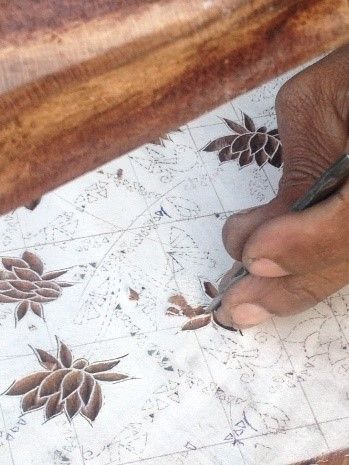by Evie Brett
This past Sunday, I took a trip to York Art Gallery to see the new exhibition, The Art of Wallpaper: Morris & Co. – something I had been longing to do ever since the show first opened in September. As both a current Art History student and simply a lover of anything William Morris, I couldn’t wait for the chance to see some of his work in person.
Exploring the legacy of one of the world’s most successful pattern designers, the gallery’s five ground-floor rooms were transformed once again, being painted in shades of green, blue, pale pink, and mustard yellow, to showcase over 130 works from the archives of Morris & Co. The exhibition aimed to celebrate the 19th-century designer as an individual, as well as explore his work, influence, and legacy in UK wallpaper innovation. Each room displayed framed original samples, transporting visitors back into interiors of the Victorian age, alongside both upholstered furniture in Morris & Co. fabrics and even the original wooden blocks that had been used to create the prints in the first place.
It was seeing these particular objects that sparked a connection for me to Conscious Apparel and the many beautiful collections of hand-block printed garments.
Though the exact date of the invention of hand block printing is unknown, the earliest record of the technique is the Diamond Sutra, a 16-foot long scroll, printed in China in 868 AD and today, considered the oldest printed book in the world. Though emerging first in China over 4,000 years ago, block printing was soon disseminated throughout Asia, and ultimately the rest of the world, though it rose to specific prominence within Mughal India. Indeed, Shah Jahan, the Mughal emperor responsible for the building of the Taj Mahal, was known for his expensive taste in luxurious, hand-block-printed fabrics. The entire textile industry flourished under the Mughal patronage, and the process used today remains largely unchanged since the dynasty ruled in the 16th and 18th centuries.
Using much the same process as Morris, many of Conscious Apparel’s patterned pieces by Nila Rubia are created using the hand block printing technique. To create such designs, wooden blocks are hand-carved into intricate patterns and floral motifs – a task that is both laborious and requires great skill. Though under Morris & Co., designs were exclusively printed using the direct method, applying the inked block straight onto the fabric, the garments at Conscious Apparel are additionally formed using the resist technique. For this, a wax paste is applied onto the material using the carved blocks, before submerging it into the chosen dye, allowing the material to dry, and finally removing the paste to reveal the pattern left behind.
The William Morris exhibition is at York Art Gallery until 23/02/25
We hope you enjoy Nila Rubia’s collections at Conscious Apparel and can appreciate the skill that goes into making them.




